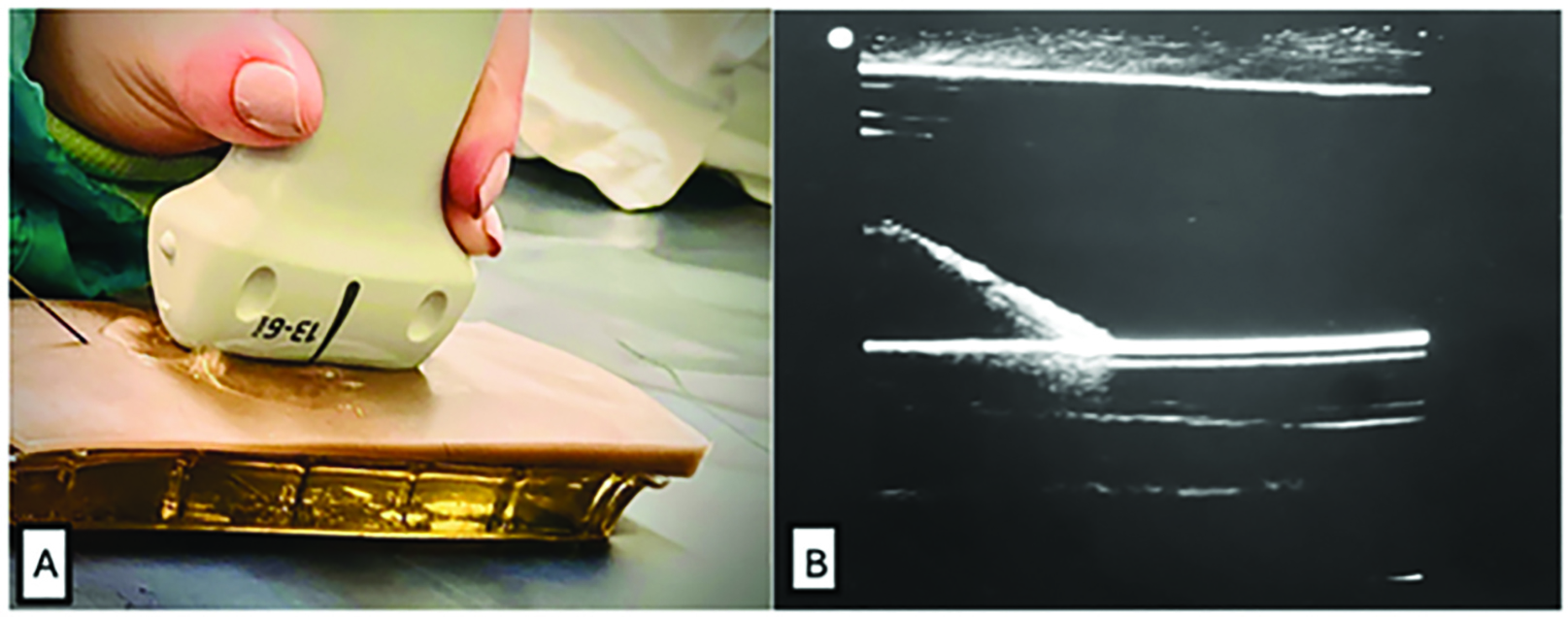
Ultrasound (USS) guided regional anaesthesia is a core skill in anaesthetic training. However, access to high-fidelity phantoms is often restricted by cost. Simulation-based training is well recognised for improving clinical performance [1] and low-cost phantoms offer significant educational value [2]. We developed an affordable, realistic, and reusable gelatine-based phantom in collaboration with the simulation team at our hospital. We evaluated its effectiveness through user feedback across different training levels.
The aim of our project was to assess the educational value, realism and usability of a low-cost USS Needling phantom that we developed in-house, amongst anaesthetic trainees and consultants. The phantom was made using gelatine, glycerine, silicon tubing (to simulate nerves or vessels), and a silicone skin to mimic anatomical realism as seen in Figure 1. It was used in a hands-on training workshop conducted in October 2024 with anaesthetic trainees (ST1-7), clinical fellows and consultants. Post workshop feedback was collected through surveys with questions focusing on realism, needle feel, ultrasound clarity and overall training value.
Our gelatine models were successfully used for ultrasound imaging and needling practice for cannulation and nerve blocks. Feedback was given by anaesthetists across on clarity, realistic resistance and educational value, with 96% (25/26) of respondents rating the model as a useful tool for needling practice. The selected combination of ingredients resulted in a model with excellent needle visibility, minimal track mark retention, and ease of ultrasound use, all while maintaining structural integrity and durability. The total cost of consumable materials for a single model was under £40, making it an affordable training tool. Additionally, our models are reusable and can be stored in the freezer for up to six weeks, then thawed for reuse without compromising quality.
Over the past decade, USS has become an indispensable tool in anaesthesia and intensive care, with NICE guidelines recommending its use for procedures such as central venous cannulation and peripheral nerve blocks. However, gaining competency in USS imaging and needle visualisation can be challenging.
Our model is an affordable, reusable, durable, and high-functional fidelity alternative to both existing gelatine models and expensive commercial phantoms. It provides a practical solution for ultrasound training in anaesthesia and critical care, and other junior trainee doctors in various specialities, ensuring accessibility without compromising educational value. The model also aligns with national curriculum goals on USS proficiency [3]. Feedback from trainees and experienced clinicians highlights its strong educational impact.
As the submitting author, I can confirm that all relevant ethical standards of research and dissemination have been met. Additionally, I can confirm that the necessary ethical approval has been obtained, where applicable.
1. McGaghie WC, Issenberg SB, Cohen ER, Barsuk JH, Wayne DB. A critical review of simulation-based medical education research: 2003–2009. Med Educ. 2010;44(1):50–63.
2. Walsh CD, Ma IWY, Eyre AJ, et al. Implementing ultrasound-guided nerve block in the emergency department: A low-cost, low-fidelity training approach. AEM Educ Train. 2023;7(5):e10912.
3. Royal College of Anaesthetists. 2021 Curriculum: Learning syllabus – Stage 3: Regional Anaesthesia.

